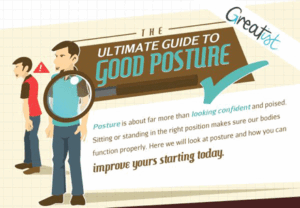Don’t Let Spasms Cramp Your Workouts
We have all experienced those nasty stitches in our side or sudden calf cramps while working out. Some of us have even been startled awake in the night by a sudden ‘Charlie horse’ in our leg. Here are some helpful tips to thwart would be ‘sniper’ spasms and what you can do to avoid them.
Prevent Cramps
• Drinks lots of water. The average person should be drinking 50% of their body weight in ounces of water, daily. If you are active, you should drink 60% of your body weight in ounces of water, daily.
• Fill up on electrolytes. Check your diet. Low levels of sodium and potassium could be the reason for that side stitch.
• Take a good Multi-Vitamin. Studies suggest magnesium, zinc, and vitamins B, D, and E can limit the likelihood of getting a muscle cramp (or at least ease the pain).
• Jump around. When small nerves in our muscles get fatigued, cramping can occur. Luckily, jumping drills (a.k.a. plyometrics) keep these nerves from tiring. Do them a few times a week after working out to help prevent spasms.
• Warm up and cool down. Make the time. This is as important as the workout itself. Failure to observe this will result in poor performance or injury over a prolonged period of neglect.
Treat Cramps
• Stretch the spot. Once the spasms start, stop, drop, and stretch. It’s better to stop for 10 minutes and address the cramp than it is to ‘run through it.’
• Take a chill pill. Stop! If the cramp lasts too long, you could cause long term tissue damage. Ask if you would rather miss out on a today’s run or running for the next 6 weeks (the histological time for proper collagen repair)
• Supplement your diet.
If you are eating too much of these;
Foods that inflame
• refined carbohydrates, such as white bread and pastries
• French fries and other fried foods
• soda and other sugar-sweetened beverages
• red meat (burgers, steaks) and processed meat (hot dogs, sausage)
• margarine, shortening, and lard
You should eat more of these:
Foods that combat inflammation
• tomatoes
• olive oil
• green leafy vegetables, such as spinach, kale, and collards
• nuts like almonds and walnuts
• fatty fish like salmon, mackerel, tuna, and sardines
• fruits such as strawberries, blueberries, cherries, and oranges
It may take some adapting in your diet, routine and even overall time management, but in the end, preventing cramps and staying ahead of potential pitfalls is your best defense for injury reduction and improved performance.
Ready to #feelbetter?
You're just a click away from a wicked good massage!
-

60 Minute Massage Gift Card
$170.00 Add to cart -

90 Minute Massage Gift Card
$255.00 Add to cart -

Mini Aer Small Room Air Purifier
$149.00 Add to cart -
Sale!

Thera-Pearl Sports Pack/Hot Cold
Original price was: $14.99.$12.99Current price is: $12.99. Add to cart -

3 Somadome Sessions Gift Card
$135.00 Add to cart -

TheraBand CLX Connective Loop
$14.99 Select options -

6 Somadome Sessions Gift Card
$270.00 Add to cart -
Sale!

Biofreeze
Original price was: $14.99.$12.99Current price is: $12.99. Add to cart
Passion Mountain
I was at an event recently and was asked by somebody how I could STILL be so passionate for what I do. He said, “What I mean is that you talk about what you do with the passion of child flipping through a new pack of baseball cards. I wish I was that passionate about…
Read MoreFish You Should Scale Back On
New Englander’s love their seafood and we deepen our love affair every summer when our favorite crustaceans, ‘lobstah’ is a plentiful. But what is the best seafood for us and what are the ones that we should be staying away from regardless of how yummy they may be? Monterey Bay Aquarium has combined data from…
Read MoreSports are a Great Metaphor
It’s no secret that my life has always revolved around athletics. From my early days playing pop warner football, through my college years of lacrosse and on into the various community leagues since, being part of a team has always been where I feel most comfortable. What I enjoy most about being part of a…
Read MoreWhat is an Expert?
“An expert is someone widely recognized as a reliable source of technique or skill whose faculty for judging or deciding rightly, justly, or wisely is accorded authority and status by their peers or the public in a specific well-distinguished domain.” – Wikipedia This past month I flew to Atlanta to present a few classes in…
Read MoreThe Power of a Hug
Originally Posted 5/1/2014; following the 1 year anniversary of the Boston Marathon Bombings and our mission to rebound after these horrible attacks on our city. We helped orchestrate the ‘One Run for Boston’; a 3328.2 NON-STOP running relay from LA to Boston, raising over $500K for the victims and survivors of the events of 4/20/2013.…
Read MoreTips from the Table
Without fail, every marathon season, I am asked by my patients, what kind of advice I would offer up to them as they prepare to run the Boston marathon. I first admit that I have never (nor will ever) run a marathon, but given my unique insight of spending 1000’s of hours alone in a…
Read MoreShoulder Impingement
The glenohumeral joint is a highly complex articulation. It has the greatest range of motion of any joint in the body. However, its increased motion occurs at the expense of stability, requiring the soft tissues to play a more critical role in maintaining joint integrity. As a result of increased mechanical demands, numerous soft-tissue injuries…
Read MoreTrain, train, train. Train of fools.
In my seventeen years as a massage therapist, I am still amazed by some of the things I see in my office. Being situated 1/10th of a mile from the finish line of one of the most prestigious marathons in the world, the Boston Marathon, we see more than our fair share of runners coming…
Read MoreAchilles Tendon Disorder
Achilles Tendon Disorder Massage therapists see many clients with active lifestyles. Running, jumping, dancing, climbing, or any number of other activities can put serious stress on the Achilles tendon (AT). AT disorders also can contribute to biomechanical disorders in the foot and lower extremity. That is why it is important for the massage practitioner to…
Read More


